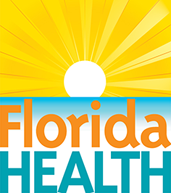Hot Topics
Main Number
Abstinence Only Education Information
Teen birth rate has been declining slowly but steadily in Florida. The Miami-Dade County School Health Program promotes and supports Abstinence Only Education for pre-teens and teens in Miami Dade County Public Schools, Charter Schools and other community agencies. We also support and encourage parental involvement. For more information about abstinence visit Teen Pregnancy | CDC
Head Lice
Head lice have accompanied humans for thousands of years. They are insects that spend their entire lifecycle on the human scalp, clinging to the hair while feeding, mating and laying eggs. Head Lice don't jump or fly they are transmitted from person to person by direct contact or by sharing objects such as combs or brushes, towels, headphones, hats, etc. It has nothing to do with cleanliness any one can get head lice. Parents/guardians can help prevent the spread of head lice by checking their child's head for lice on a weekly basis as part of his/her regular personal hygiene routine, notifying the school if their child has head lice and by discouraging children from sharing their personal items. For further information, see the attached "A Guide for the Prevention and Treatment of Head Lice."
For further assistance, contact:
- Miami-Dade County Health Department, School Health Program: 305-278-1097
- Miami-Dade County Public Schools, Comprehensive School Health Services 305-995-4111
- National Pediculosis Association (English/Spanish)
- Treatment for head lice
Obesity
Obesity is a severe issue affecting children and adolescents aged 2-19 years across the nation. Data from the 2017-2020 National Health and Nutrition Examination Survey (NHANES) shows that 19.7% of the children and adolescents aged 2-19 years are obese nationwide, an increase from 18.5% from the 2015-2016 NHANES. Amongst Hispanic children, the prevalence of obesity was 26.2% and 24.8% amongst non-Hispanic Black children. The health consequences associated with childhood obesity includes high blood pressure and high cholesterol, which are risk factors for cardiovascular disease, increased risk of impaired glucose tolerance, insulin resistance, and type 2 diabetes, breathing problems, such as asthma and sleep apnea, as well as musculoskeletal discomfort and fatty liver disease. Childhood obesity has also been known to have psychosocial consequences. Some examples of psychosocial consequences of childhood obesity are anxiety and depression, low self- esteem and lower self- reported quality of life. In addition; childhood obesity can cause social problems like bullying and stigma.
The Healthy School Initiative was mandated in 2001 by the Secretary of the Department of Health in counties receiving full-service school funding. It was designed to increase the awareness of students and their families about the risks of childhood obesity, physical activity involvement, and nutrition improvement. Children attending Full Service and Comprehensive schools were screened for height and weight with body mass index (BMI) measurements in grades kindergarten, first, third, sixth, and ninth. Additionally, a minimum of three activities geared towards nutrition and physical activity were conducted. This was done in conjunction with statewide activities designed to promote awareness of this health concern and increase involvement in healthy lifestyles. At this time, Miami Dade County Public Schools are now obligated to adhere to a local school district wellness policy.
Resources:
Human Trafficking
There are two types of human trafficking, labor trafficking and sex trafficking. Labor trafficking is when a person is used to provide work through force, fraud, or coercion. Sex trafficking is when a person is forced to have sex for money through force, fraud, or coercion. If a person is younger than 18 and is engaging in commercial sex, it is a crime, even if there is no force, fraud, or coercion. Anyone can be at risk for human trafficking; however, some groups are more vulnerable than others. Children in foster care, LGBTQ individuals, undocumented immigrants, people with disabilities, racial and ethnic minorities, people with low incomes, and communities exposed to intergenerational trauma, for example, are some groups who are at increased risk for human trafficking. For more information, including signs that someone may be experiencing human trafficking, please visit Human Trafficking | The Administration for Children and Families
Disaster Preparedness
In the school setting being prepared for disaster is a necessary and vital part of School Health. Whether man made or natural, disasters can impact schools and their population and preparedness is essential. Because of their professional education and continual training, the school nurse and social worker have become experts in assessing, planning, implementing, and evaluating the needs of children. Therefore, they would be the health experts in helping to develop a disaster plan in the schools, especially for children with special needs.
Resources:
Violence in Schools
Violence in schools is becoming an increasing concern in the United States. Types of violence include bullying, gang activity, physical and verbal fights, and substance abuse. The MDCHD School Health Program plays an important role in violence prevention by providing education, counseling and consultation services to students, parents, and school staff. Activities include teaching conflict resolution skills, providing information on drug and alcohol abuse, handling peer pressure, and promoting emotional well-being.
Resources:



Connect with DOH